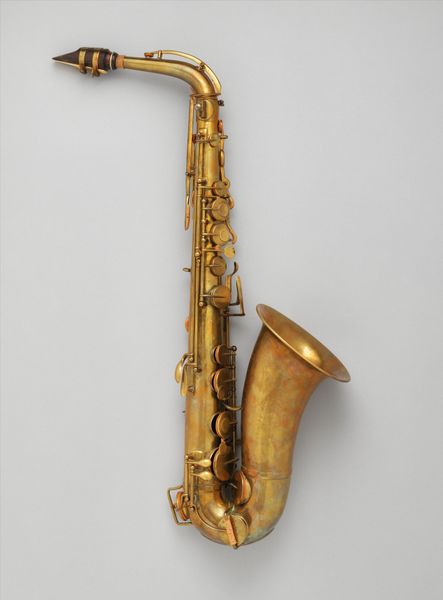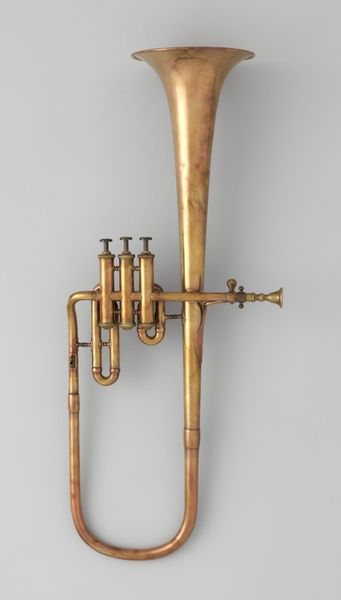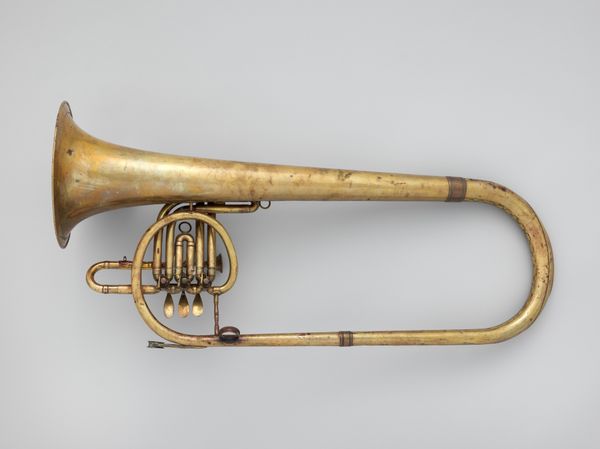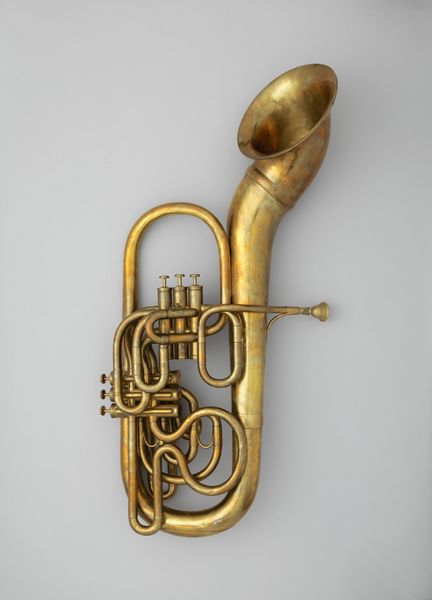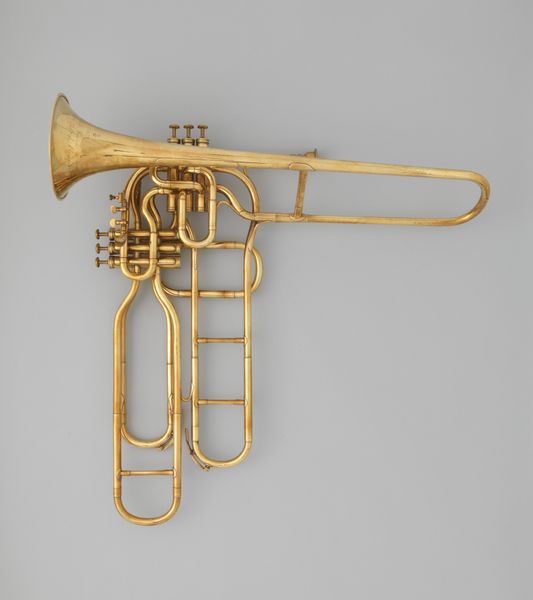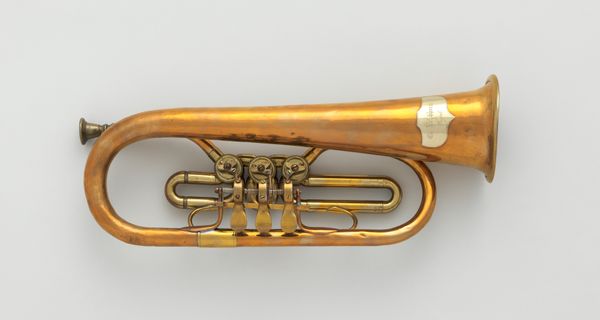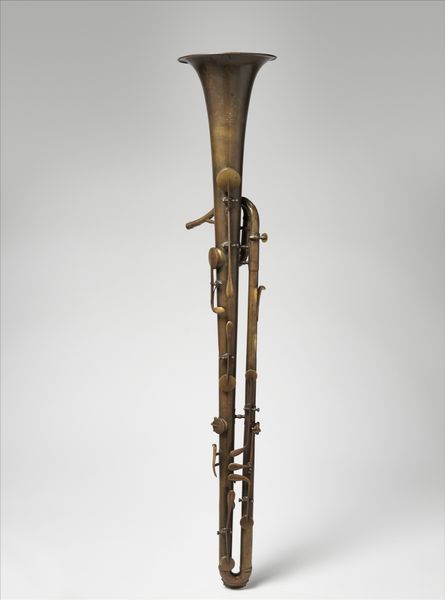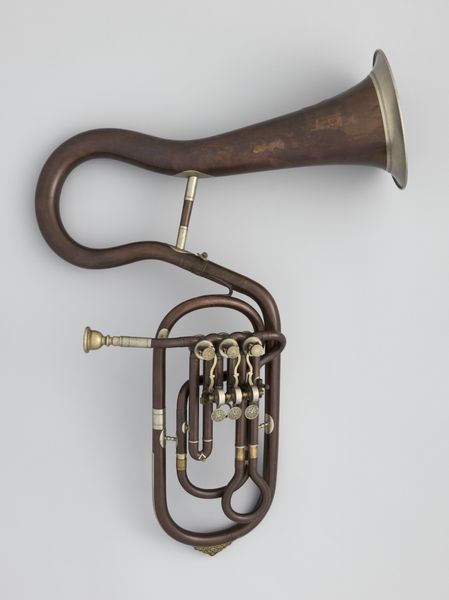
brass, metal, bronze, sculpture
#
brass
#
metal
#
sculpture
#
bronze
#
sculpture
#
romanticism
#
france
#
men
#
musical-instrument
Dimensions: 25 11/16 × 6 13/16 × 11 1/2 in. (65.2 × 17.3 × 29.2 cm)
Copyright: Public Domain
Editor: So, this is a Soprano ophicleide in B-flat, made sometime between 1825 and 1875 in France by Adolphe Sax, crafted from brass, bronze, and other metals. It has this really strange, almost steampunk aesthetic to it. What strikes you about this instrument? Curator: Well, what immediately catches my eye is how this object embodies a particular moment in the 19th century, where music was becoming more democratized, reaching broader audiences through evolving technologies. Instruments like this weren't just functional; they became symbols of social change and cultural aspiration. Consider where this instrument would be played; who would have access to it? How might a 'soprano' sound within that society? Editor: That's interesting! I never really considered how access played a role. I guess I assumed these were just in orchestras for wealthy patrons. Curator: Not necessarily! Though patronage certainly existed, the industrial revolution facilitated mass production making some instruments more accessible, and the growing middle class craved cultural participation. What role do you imagine an instrument such as this would have within different social strata? Were women playing it, for instance? Editor: Probably not? Maybe some. I hadn't really thought about the gender politics of instrument-playing back then. Curator: Exactly. The construction, too—the metal, the elaborate key system—reflects a fascination with innovation and the expansion of instrumental possibilities. It makes me wonder about its cultural value versus its material worth. What happened to shift preferences toward its descendants or alternatives? Editor: I guess things like trumpets just became more popular, and the ophicleide faded away? Curator: It's likely a bit more complex, linked perhaps to changing tastes, socio-economic shifts affecting musical patronage, and the politics of the orchestra itself. Think about the institutions that promoted certain sounds over others. Editor: Wow, I’ll definitely look at musical instruments differently now! Thanks for opening my eyes to all that. Curator: My pleasure. Reflecting on how instruments intersect with history certainly enriches our understanding of both art and society.
Comments
No comments
Be the first to comment and join the conversation on the ultimate creative platform.


